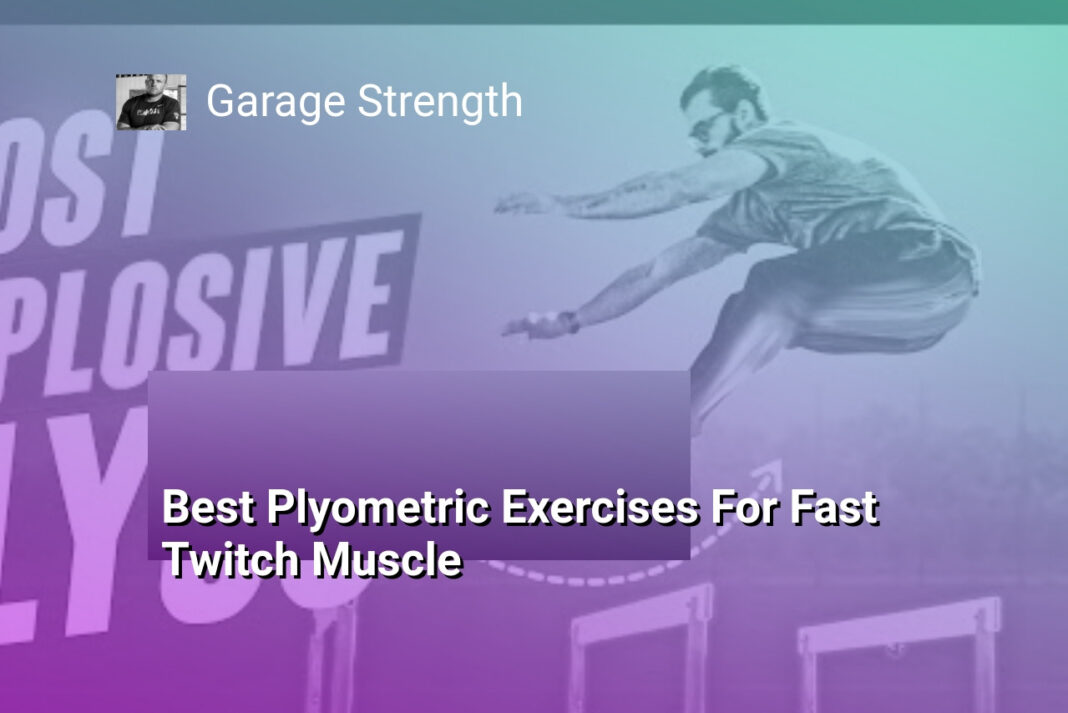The Bottom Line:
- The main theme of the text is to provide a series of plyometric exercises to improve fast-twitch muscle and athletic performance, drawing from the author’s experience as a coach and athlete.
- The exercises include box jumps, single-leg pogo jumps, lateral side-to-side jumps, and progressions involving broad jumps, hurdle hops, and box jumps.
- The author emphasizes the importance of proper technique, such as using arm swings, maintaining proper distance from the box, and generating high force during ground contact.
- The exercises are presented in a progressive manner, with the author suggesting ways to increase the difficulty and complexity over time to challenge athletes at different skill levels.
- The author also highlights the benefits of these exercises for improving agility, explosiveness, and overall athletic performance, particularly for sports like football, basketball, and track and field.
Box Jumps: Mastering the Fundamentals
Mastering the Fundamentals: Unlocking Your Explosive Potential
The box jump is a versatile and effective exercise that can help you develop the fast-twitch muscle fibers essential for peak athletic performance. While some may dismiss the box jump as a simple exercise, its simplicity is precisely what makes it a valuable tool in your training arsenal.
One of the key benefits of the box jump is its ability to teach proper execution. Mastering the counter-movement, arm swing, and distance to the box are crucial for developing the explosive power and elasticity needed for high-speed movements. By starting with a basic box jump and gradually progressing through variations, you can help athletes, even those who are younger or less experienced, learn to execute these high-speed actions with precision.
As you become more comfortable with the box jump, you can introduce additional challenges to further develop your fast-twitch muscle. Incorporating pauses, double bounces, and quick repetitive jumps can help you build the reactive strength and neuromuscular coordination required for explosive movements. Additionally, paying close attention to your body’s feedback and adjusting the distance to the box can help you find the optimal balance between power and control.
Unlocking the Power of Single-Leg Plyometrics
Building on the foundation of the box jump, single-leg plyometric exercises like the Pogo jump can take your fast-twitch muscle development to the next level. These exercises challenge your body to generate force and react quickly on a single limb, which is crucial for sports that require rapid changes of direction, cutting, and explosive movements.
The key to mastering the single-leg Pogo jump is to focus on minimizing ground contact time and maximizing hip height. By striving for a short, powerful ground contact and a high, reactive hip drive, you can train your body to generate and transfer force efficiently. As you progress, you may even notice the “whip” effect, where the non-jumping leg helps to create a dynamic, full-body movement pattern that closely mimics the mechanics of sprinting.
Incorporating these single-leg plyometric exercises into your training, even with beginner-level athletes, can help develop the necessary strength, stability, and neuromuscular control for high-speed, agile movements. By gradually increasing the difficulty, such as adding hurdles or varying the distance, you can continue to challenge your body and push the limits of your fast-twitch muscle development.
Combining Unilateral and Bilateral Plyometrics
To further enhance your plyometric training, consider incorporating a combination of unilateral (single-leg) and bilateral (two-leg) exercises. This approach can help you develop a well-rounded foundation of power, stability, and coordination.
One effective progression could involve starting with a broad jump, followed by a Pogo jump or a box jump. This combination challenges your body to generate horizontal force, then quickly transfer that energy into a vertical, explosive movement. As you become more proficient, you can progress to more advanced variations, such as broad jump to hurdle hop or broad jump to box jump.
The key to this approach is to carefully manage the rest periods and intensity levels. By allowing sufficient recovery time between sets, you can ensure that your body is able to perform each high-intensity movement with maximum effort and focus. This attention to detail will help you continue to push the boundaries of your fast-twitch muscle development and achieve peak athletic performance.
Single-Leg Pogo Jumps: Improving Ground Contact Time and Reactivity
Enhancing Ground Contact Time and Reactivity with Single-Leg Pogo Jumps
The single-leg pogo jump is a highly effective exercise for improving ground contact time and reactivity. This movement challenges the athlete to maintain a short ground contact time while generating high forces during the brief ground contact phase. The goal is to achieve a quick, reactive push-off while maximizing hip height.
Mastering the Pogo Technique
Start by performing the single-leg pogo jump without any hurdles or obstacles. Focus on maintaining a rapid, stutter-step rhythm, keeping ground contact time to a minimum. As you become more proficient, you can progress to incorporating mini-hurdles or cones to further challenge your reactivity and coordination.
Developing Co-Contraction and Stability
To build the necessary co-contraction and stability through the hip girdle, incorporate lateral single-leg pogo jumps. This variation challenges the adductors and other stabilizing muscles to handle the high-speed changes of direction. Begin with a simple side-to-side pattern, gradually increasing the difficulty by adding hurdles or increasing the jump distance.
By mastering the single-leg pogo jump and its variations, you’ll develop the ground contact time, reactivity, and co-contraction required for peak athletic performance. These exercises can be seamlessly integrated into your strength and conditioning program, providing a valuable tool for improving fast-twitch muscle activation and overall explosiveness.
Lateral Jumps: Strengthening the Hip Girdle for High-Speed Movements
Lateral Jumps: Strengthening the Hip Girdle for High-Speed Movements
Lateral jumps are a powerful plyometric exercise that target the hip girdle, which is crucial for high-speed movements in many sports. This exercise challenges the adductors, abductors, and core muscles to work together in a coordinated fashion, improving overall stability and power transfer through the kinetic chain.
Mastering the Lateral Jump Technique
Begin by standing with your feet shoulder-width apart, knees slightly bent, and core engaged. Initiate the movement by driving through the outside of your lead foot, explosively jumping to the side. Land softly on the opposite foot, maintaining control and balance. Immediately reverse the movement, pushing off the new outside foot to jump back to the starting position. Focus on keeping your torso upright, avoiding excessive lateral flexion or rotation.
Progressions and Variations
As you become more proficient, you can increase the challenge by adding hurdles or boxes to jump over. Start with a small height and gradually progress to higher obstacles, focusing on maintaining proper form and explosiveness. Another variation is to incorporate a stutter step before the jump, which requires even greater coordination and control.
Pairing the lateral jump with a bilateral plyometric exercise, such as a box jump or broad jump, can further enhance the training effect. This combination challenges the athlete to quickly transition from a unilateral to a bilateral movement, mimicking the demands of many sports.
Remember to allow for adequate rest and recovery between sets, as these high-intensity exercises can be taxing on the neuromuscular system. Gradually increase the volume and intensity as your athletes become more accustomed to the movement pattern.
By incorporating lateral jumps into your plyometric training program, you’ll help your athletes develop the explosive power, agility, and stability needed for peak athletic performance.
Broad Jump to Box/Hurdle Hops: Integrating Horizontal and Vertical Power
Mastering Horizontal and Vertical Power Coordination
The broad jump to box/hurdle hops exercise is a powerful integration of horizontal and vertical power development. This progression allows athletes to seamlessly transition from generating force in the horizontal plane to expressing it vertically, challenging their ability to coordinate these complementary movement patterns.
Broad Jump to Pogo Hops
Start by performing a broad jump, focusing on driving through the ground to maximize horizontal displacement. Immediately upon landing, transition into a series of quick, bouncing pogo hops, maintaining a stiff, reactive posture and minimizing ground contact time. This challenges the athlete to rapidly switch from a horizontal to a vertical power expression, developing the neuromuscular coordination and elastic qualities necessary for explosive athletic movements.
Broad Jump to Box Jumps
Building upon the previous progression, the broad jump can be followed by a box jump. After the broad jump, the athlete must quickly absorb the landing forces and then explosively drive upwards to clear the box. This requires exceptional lower body power, as well as the ability to effectively transfer momentum from the horizontal to the vertical plane. Varying the box height can provide different levels of challenge to the athlete.
Broad Jump to Hurdle Hops
The most advanced version of this exercise involves a broad jump followed by a series of hurdle hops. The athlete must precisely gauge the distance of the broad jump to ensure a successful transition into the hurdle hops, which demand a high degree of lower body power, reactivity, and neuromuscular control. This exercise trains the athlete’s ability to seamlessly integrate horizontal and vertical force production, a critical skill for many sports.
By progressing through these variations, athletes can develop the necessary power, coordination, and elasticity to excel in a wide range of athletic endeavors. The broad jump to box/hurdle hops exercise challenges the athlete to fluidly transition between movement planes, building the foundation for superior athletic performance.
The Ultimate Plyometric Exercise: Unlocking Explosive Athleticism
Mastering the Art of Explosive Jumping
The box jump is a fundamental plyometric exercise that can unlock explosive athleticism. It’s a simple yet highly effective movement that challenges the body to generate maximum force in a short period of time. By focusing on proper execution, including the counter-movement, arm swing, and controlled landing, athletes can develop the fast-twitch muscle fibers essential for peak performance.
Unleashing Unilateral Power
Single-leg pogo jumps are a game-changer for building unilateral lower-body power. This exercise trains the body to react quickly, generate high forces, and minimize ground contact time – all critical elements for explosive movements like sprinting and cutting. By incorporating a stutter-step variation, athletes can further challenge their coordination and reactivity.
Lateral Plyometric Prowess
Mastering lateral plyometric exercises, such as side-to-side jumps, is crucial for developing agility and multi-directional power. These movements target the often-overlooked stabilizing muscles of the hip and groin, which play a vital role in high-speed change of direction. Progressing from simple lateral jumps to more complex variations, like broad jump to hurdle hops, can help athletes unlock their full athletic potential.
By incorporating these plyometric exercises into a well-designed training program, athletes can expect to see significant improvements in their explosive power, speed, and overall athletic performance. The key is to focus on proper technique, progression, and individualization to ensure maximum benefits and minimize the risk of injury.





